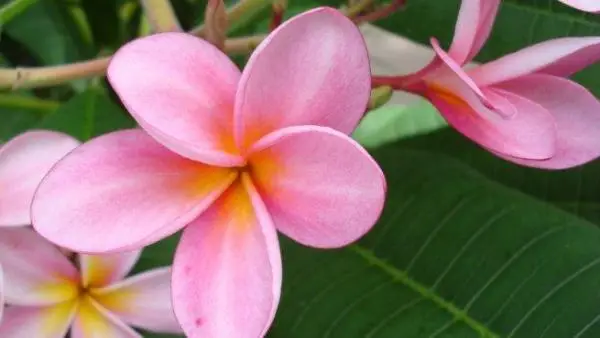The plumeria plant, belonging to the genus of the same name, belongs to the Apocynaceae family and is composed of 7 species of trees and shrubs that have their origin in Central America and Mexico. Its name is a tribute to the French Charles Plumier and its main species are plumeria Rubra, Plumeria obtusa, plumeria pudica, and plumeria alba, among others.
Basic plumeria plant care
Here we leave you a list with the essential care to be able to have a plumeria plant in good condition:
- Location : You need to be in a sunny place where you can receive several hours of good natural light a day, but avoiding the sun’s rays for a long time.
- Temperature : it does not resist cold or very sudden changes in temperature, and the higher the temperature, the better. It can live perfectly in areas that have mild winters and stay outside, but if it is cold it is better to spend that time indoors.
- Soil : the most suitable is the one with a mixture of garden soil, sand with heather soil and peat, all in equal parts. It must be planted during the winter.
- Irrigation : it must be abundant in spring and summer, and less during the fall. In winter, they practically have to be suspended so that it does not flood.
- Compost : apply a mineral fertilizer every 15 days during spring and summer.
- Pruning : not necessary but interior branches can be removed so that light can penetrate well. It should only be done after flowering.
- Multiplication : it is done through cuttings that are obtained at the end of winter and that must be put to dry for several hours to eliminate the latex that it produces. Then remove the latex and root them in damp sand.

Other interesting plumeria facts
It is also known by common names such as plumiera, romperpán, Indian jasmine or sacuanjoche. They are shrubs or small trees that have thick branches and can reach 6 meters in height .
It has large, alternate, simple, dark-colored leaves. Its flowers are the most perfumed you can find and have a helix shape and colors such as yellow, purple, cream, pink or white.

